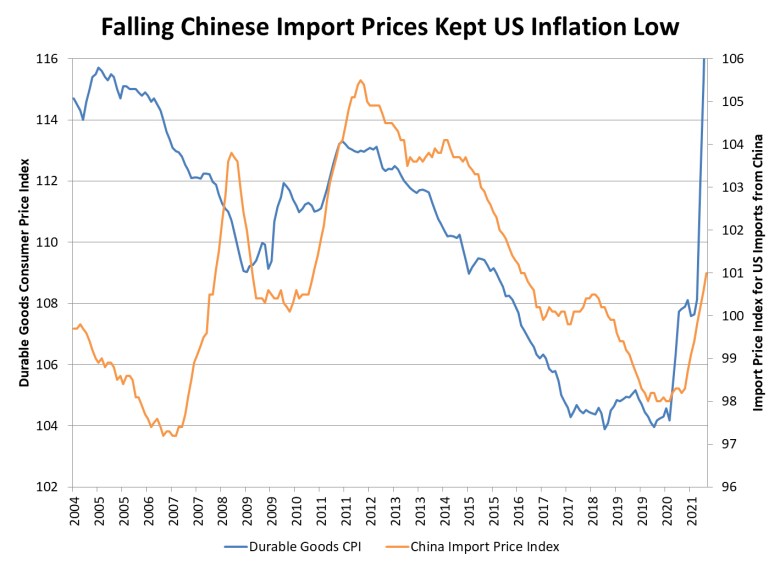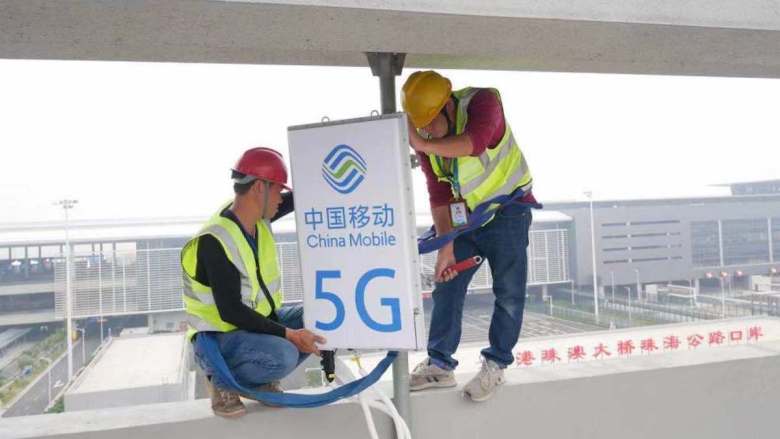US business pushes Biden for a China trade deal Trump era tariffs on Chinese imports are fuelling record US inflation and threaten Biden’s chances at 2022 mid-term elections: David Goldman
NEW YORK – Never before in US political history has the whole of the American business community—more than thirty major business organizations—spoke with one voice as it did in an August 5 appeal to the Biden administration to eliminate tariffs on imports from China.
No entities in American politics are timider than business lobbies, most of whose work involves quiet lobbying for administrative relief and legislative tweaks. Such a high-profile intervention suggests that the business organizations believe that a deal is already underway.
A deal is likely because inflation could poison the Democratic Party’s chances at 2022 mid-term elections and return control of the US Congress to the Republicans. Cutting tariffs is the quickest way to reduce inflation. Beyond the arithmetic of electoral politics, a consensus is emerging that the technology sanctions that Trump imposed on China have failed and may even have backfired.
More than 30 business groups including the Chamber of Commerce, the Business Roundtable, the Semiconductor Industry Association, as well as retailer, farm and manufacturing representatives asked Biden to cut tariffs and restart trade talks with China.
The letter stated: “A worker-centered trade agenda should account for the costs that US and Chinese tariffs impose on Americans here and at home and remove tariffs that harm U.S. interests.”
Last month, Treasury Secretary Janet Yellen told the New York Times that tariffs “hurt American consumers.” Since then-president Donald Trump imposed a 20% tariff on roughly half the goods America buys from China, the Treasury has collected about $100 billion in fees. Most of that was paid by US consumers.
Tariffs explain part of the explosion in durable goods inflation during the past year. Consumer prices for durables fell steadily between 1995 and 2020, mainly due to lower costs for electronics. The Consumer Price Index for durables fell by 25% between 1997 and 2020, before rebounding by 15% since the Covid-19 lockdown.
As shown in the chart below, falling prices for US imports from China had a big impact on the prices Americans paid for durable goods.
 Inflation is the most pressing economic issue for American voters, according to a Vox/Data for Progress poll released on August 3.
Inflation is the most pressing economic issue for American voters, according to a Vox/Data for Progress poll released on August 3.
The US now imports about $550 billion a year from China, or almost a quarter of America’s manufacturing output of $2.4 trillion on a GDP basis. Tariffs of 20% apply to about half of Chinese imports, so by simple arithmetic, the elimination of tariffs should reduce the cost of durable goods in the US by a bit over 2%.
Renmin University Professor Jin Canrong, a prominent Chinese academic closely followed in Washington, argued last week that inflation could bankrupt the US federal government by boosting the cost of interest on the federal debt He added that the US needs China’s supply chains to keep inflation under control (“Will China bail out Biden?,” Aug. 3, 2021).
China’s state-controlled English language newspaper Global Times commented on August 6, “US high-tariff policy is against the trend of the times and will not hold for long. Chinese companies have generally adapted to the new situation, while the US is suffering more from the tariffs than China. This has gradually become a consensus in US public opinion. And this has given China better conditions to maintain its strategic focus. In fact, it is also an increasingly clearer manifestation of China’s comprehensive strength.”
An increasing number of American strategists meanwhile have concluded that Trump failed to slow China by cutting off access to high-end semiconductors made with US technology. Asia Times last month was the first to report that China had the semiconductor capacity to work around American sanctions for critical applications such as 5G network buildout, and that China was moving rapidly to exploit 5G in a wide range of industries (“China is first out of the gate to Industry 4.0,” June 26, 2021).
China will build nearly a million 5G base stations this year, vastly outpacing the rest of the world combined. Chinese industry sources, moreover, report that tens of thousands of dedicated 5G networks for factories, ports, warehouses, mines and urban transportation systems will be installed in the course of the next year.
 Workers setting up a 5G base station at the border near the Hong Kong-Zhuhai-Macau Bridge. Photo: China MobileIn a July 2021 report on China’s semiconductor industry, the US Semiconductor Industry Association wrote:
Workers setting up a 5G base station at the border near the Hong Kong-Zhuhai-Macau Bridge. Photo: China MobileIn a July 2021 report on China’s semiconductor industry, the US Semiconductor Industry Association wrote:
Just last month, China sent astronauts into space to board a new space station. Earlier this year, China landed a rover on Mars. Chinese state media reported that inside both China’s space station and the Mars rover were 100% indigenously designed-and-produced semiconductors, signaling China’s increasingly sophisticated microchip capabilities.
Nevertheless, while China has mastered some chip technologies, its commercial semiconductor industry is still relatively nascent. Still, the Chinese government is making serious efforts to close the gap, investing well over $150 billion from 2014 through 2030 in semiconductors. Buoyed by a booming market and these government investments, China is poised to be increasingly competitive in some semiconductor market segments.
In an August 4 commentary for Project Syndicate, Harvard Professor Graham Allison and former Google CEO Eric Schmidt warned:
Most Americans assume that their country’s lead in advanced technologies is unassailable. And many in the US national security community insist that China can never be more than a “near-peer competitor” in AI. In fact, China is already a full-spectrum peer competitor in terms of both commercial and national-security AI applications. China is not just trying to master AI; it is mastering AI.
The pandemic has offered a revealing early test of each country’s ability to mobilize AI at scale in response to a national-security threat. In the US, President Donald Trump’s administration claims that it deployed cutting-edge technology as part of its declared “war” on the coronavirus. But, for the most part, AI-related technologies have been used mainly as buzzwords.
Not so in China. To stop the spread of the virus, China locked down the entire population of Hubei province – 60 million people. That is more than the number of residents in every state on the US East Coast from Florida to Maine. China maintained this massive cordon sanitaire by using AI-enhanced algorithms to track residents’ movements and scale up testing capabilities while massive new healthcare facilities were being built.
Asia Times broke the story of China’s use of AI for pandemic control on March 3, 2020 (“China suppressed Covid-19 with AI and big data”).
The Trump technology sanctions haven’t slowed down China. On the contrary, as Allison and Schmidt aver, China is gaining on the US and in some fields has overtaken it. Both for economic and strategic reasons, the Biden administration is likely to give Trump’s failed China policy a decent burial and move on.
Comments are closed.
